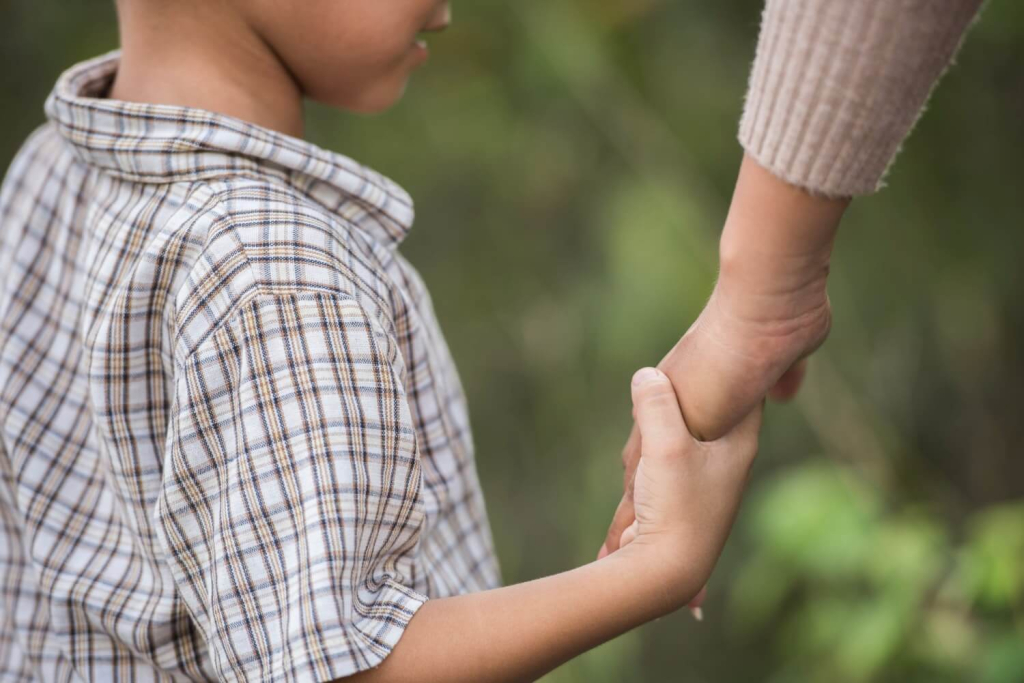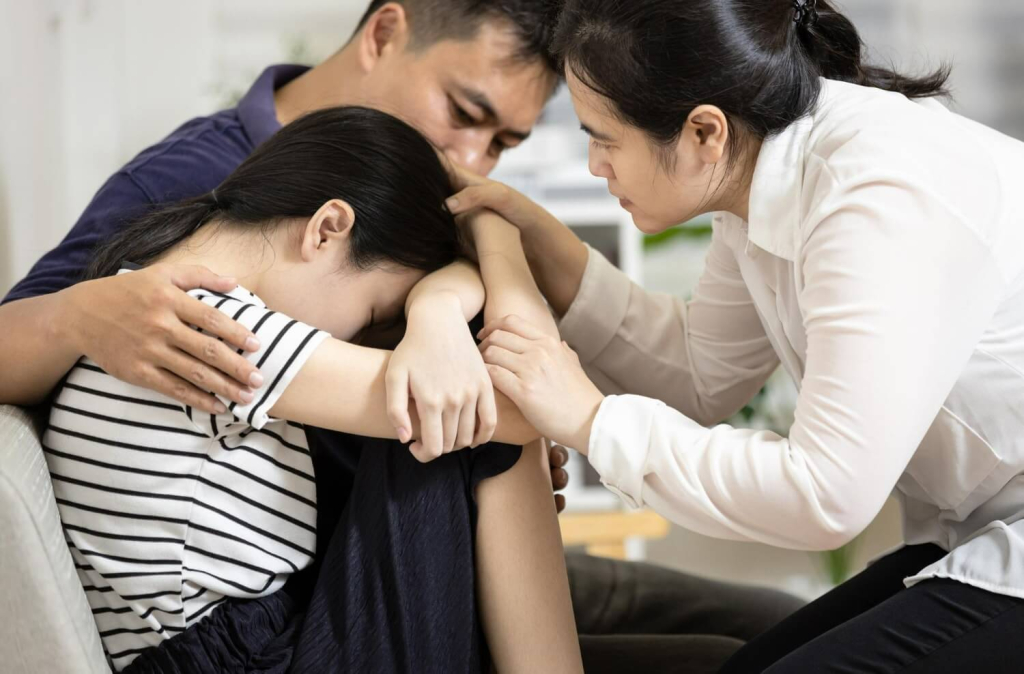
In the Philippines, bullying and mental health concerns among young people have become increasingly visible issues in recent years.
According to the Department of Education (DepEd), nearly one in three students has experienced some form of bullying, ranging from name-calling, physical bullying, or cyberbullying on social media platforms, most prevalent in a child’s school.
Meanwhile, the Department of Health (DOH) has reported a steady rise in cases of depression and anxiety among Filipino youth, with many linked to negative experiences with bullying behaviour at school or with peers.
Creating open and honest communication between parents and kids is one of the most powerful ways to prevent bullying and promote good mental health. But how exactly can parents talk openly about these sensitive issues without making their child feel judged, afraid, or ashamed?
Understanding the Connection Between Bullying and Mental Health
When a child is being bullied, there’s no one victim. In most bullying cases, both the bullied child and the child exhibiting bullying behaviour are victims.
The correlation between bullying behaviour and mental health is undeniable. Most children who are bullied often suffer from low self-esteem, anxiety, or even suicidal thoughts. At the same time, those who engage in bullying other children may also struggle with unresolved anger, insecurity, or a lack of social skills.
When a child is being bullied, the emotional and psychological toll can be severe. Victims may show changes in behavior such as withdrawal from family members, losing interest in activities, or declining performance in school.
They may feel hurt, develop low self-esteem, and start to believe they deserve poor treatment. On the other hand, children who engage in bullying behavior may be coping with their own insecurities or modeling behavior they’ve seen from other adults or peers.

Whether it’s physical bullying, verbal abuse, or cyberbullying, bullying behavior creates a cycle that harms everyone involved. Those who are bullied may eventually lash out, while those who bully often carry their aggression into adulthood.
Recognizing this link and acting early through healthy dialogue at home can break the cycle before it worsens. Bullying stops when it is recognized and mitigated.
Parenting Tips on Bullying: How to Start the Conversation
These conversations should happen even if you don’t suspect your child is being bullied. Having constructive discussions helps your child avoid getting involved in bullying, and it also allows your child to recognize and help your child stop bullying behavior they may notice in other children.
Opening up about bullying and mental health can be daunting for both parents and kids, but it’s essential.
Here are some helpful information and tips on bullying and mental well-being to guide you in starting meaningful discussions:
1. Create a Child-Safe and Non-Judgmental Space
Start by assuring your child that they can talk openly about anything.
For one, avoid interrupting or reacting with anger. Instead, listen carefully to what they say and how they say it.
Children who witness bullying or have been bullied may be fearing punishment or disbelief, and are often feeling insecure. Let them know you are there to help your child, not to blame them. Use positive comments to encourage openness, such as:
- “You can always tell me if something or someone makes you uncomfortable.”
- “I’m proud of you for being honest.”
A supportive atmosphere helps your child feel safe enough to share what’s really happening in the child’s life.
2. Ask Open-Ended Questions
Instead of asking, “Are you being bullied?” which might feel too direct or frightening, try softer prompts like:
- “Have you ever seen other students at your school being teased or hurt?”
- “How do you and your classmates treat each other online?”
This approach helps you identify bullying indirectly and encourages honest conversation.
Active listening could help encourage your child to open up. Give them a chance to ask you questions, too, and make sure to explain concepts in a way your child can easily grasp.

3. Identify Bullying Warning Signs
Some children won’t verbalize that they’ve been bullied.
Watch for signs like unexplained injuries, lost belongings, anger, or reluctance to go to school. These can be indicators of a deeper bullying situation and could signal that children experience physical bullying in school. If your child’s behavior changes suddenly, take it seriously and begin a conversation with compassion.
4. Work with the School to Prevent Bullying
If you discover your child is being bullied or that your child is bullying others, involve school staff right away.
Contact the child’s teacher, school counselor, or head teacher to report bullying and work together to stop bullying. Many schools follow federal laws and civil rights guidelines protecting students from harassment. If the bullying continues or your child is in immediate danger, escalate the matter to higher authorities or local education offices.
5. Teach Healthy Emotional Responses
Help your child learn healthy ways to respond to hurt or anger.
Encourage them to take a deep breath before reacting, seek trusted adults for help, or walk away from a harmful person or situation. Reinforce that retaliating with violence or bullying others is never a positive way to handle problems.
6. Boost Self-Confidence and Social Skills
Support your child’s activities that build self-confidence, like sports, art, or volunteering.
Encourage shared interests with other children or peers who are kind and respectful. Friendships formed in safe, supportive environments can help your child feel more secure and valued.

7. Model Respectful Behavior and Healthy Ways of Coping
Children learn by example. Demonstrate empathy, patience, and accountability at home.
When parents accept responsibility for their mistakes and apologize sincerely, kids learn to do the same. Treating others with kindness reinforces respect as a family value.
8. Monitor Online Behavior
With more students spending time on social media platforms, cyberbullying has become one of the most common forms of abuse among young people.
Teach your child to think before posting, block harmful users, and never share personal contact details publicly. Take time to explain how everything they do online will have consequences, both negative and positive. As such, young people and children need to be mindful and conscious about what they do online.
Encourage them to tell you or a teacher if something online makes them feel unsafe.
9. Seek Professional Support and Other Resources When Needed
If your child shows signs of depression, anxiety, or suicidal thoughts, don’t hesitate to seek help from a mental health professional.
Professional support can help your family process emotional trauma and rebuild confidence positively. Schools often have school counselors who can connect you with other resources if necessary.
Building a Home That Heals in Camella
The most effective way to prevent bullying and promote mental health starts at home. A loving environment gives kids the confidence to talk, the security to listen, and the strength to cope.
The home should always be a safe space and a refuge where a child feels supported, understood, and protected from harm.
In communities like Camella, families find not only comfortable homes but also neighborhoods that nurture safety and togetherness. Within Camella’s secure and family-friendly spaces, children can grow freely surrounded by trusted adults, caring neighbors, and opportunities for healthy interaction with other students and peers.
At Camella, every child can thrive in a place where love and respect form the foundation of daily life.


